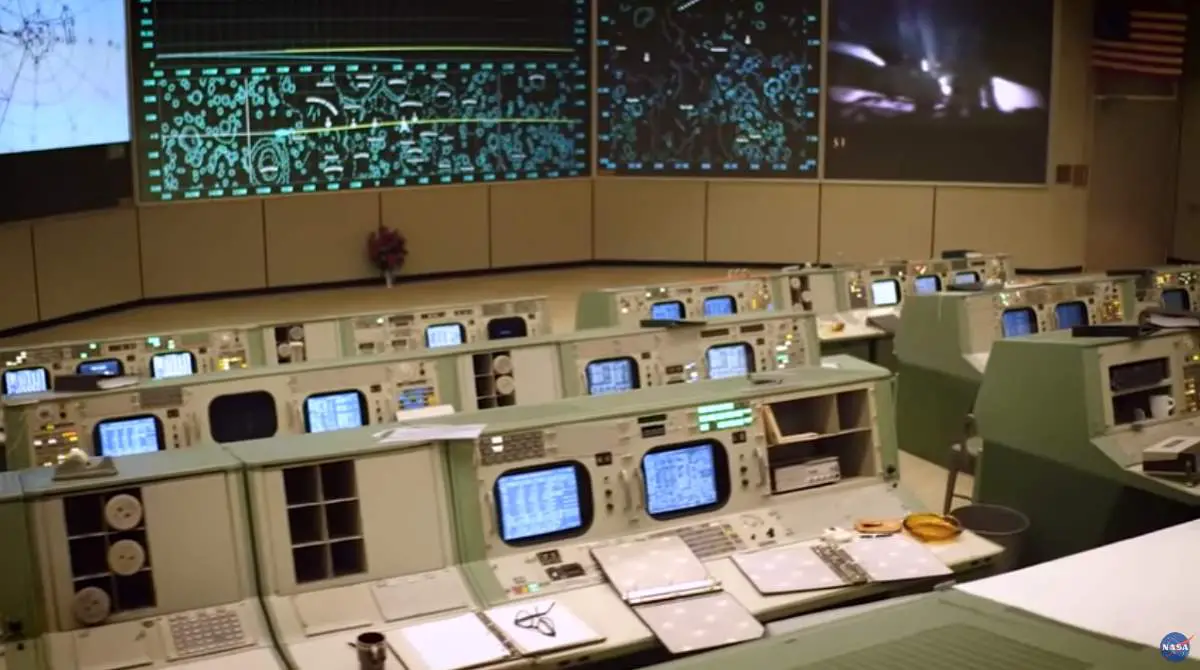The historic Apollo mission control room in Houston has been fully restored by NASA for the 50th anniversary of the Apollo 11 mission. Now it provides a snapshot of how it looked during the first Moon landing on July 20, 1969.

After the full restoration, the room was updated to look “dated” (except for the “smoke” which used to be prevalent from the cigarettes or cigars avidly smoked in mission control back then).
Sandra Tetley, historic preservation officer of NASA’s Johnson Space Center, says: “For me, as the historic preservation officer and just as an American, this is one of the most important and historic places on Earth. We landed two men on another celestial object, the Moon, and brought them safely home again. For us to be able to do that in this room, that’s significant. So, it’s important for me and for my team for [the Apollo control center] to be historically accurate. Not to look back and say, ‘This is more important than anything we’re doing now,’ but to look back and say, ‘This is significant. This is perhaps maybe as significant as Independence Hall, where we signed the Declaration of Independence.'”
“Everything will be just like it was in 1969,” Tetley adds. “It will look like you have stepped back into time-like the flight controllers just stepped away from their consoles to get a cup of coffee, or take a smoke break.”
“When you go into the viewing room, the seating is original fabric. The carpet is original. We’ll even have 1960s TVs working. There will be furnishings [on the consoles], ashtrays, documents, pens, papers, and maps. And the appropriate buttons will be lit. The summary display screens will have the proper images. And the mission clock will be lit up to the appropriate time as well.”
Apollo Mission Control Room
From this legendary room, the United States conducted some of its most amazing space missions. Now, the Historic Mission Control Center at the NASA Johnson Space Center has undergone a massive restoration to bring the room back to life as it appeared during the Apollo Program.
In this facility, NASA flight control teams planned, trained and executed Gemini, Apollo, Apollo/Soyuz, Skylab, and Space Shuttle program missions until 1992. The facility was designated a National Historic Landmark by the National Park Service in 1985, and in 2011, it was renamed the Christopher C. Kraft Jr. Mission Control Center in honor of the man who developed the concepts still used today in human spaceflight control.
Historians and technicians have made every effort to ensure historical accuracy and to preserve this room for future generations.
As NASA looks to send humans deeper into space than ever before, the Historic Mission Control will serve as a reminder that anything is possible.
The restoration team included representatives of the Apollo Mission Control teams that supported astronauts on their missions. Great pains were taken by these individuals to ensure the authenticity of the control room and the artifacts inside.
The pieces in the restored control room, visitor’s gallery, and adjacent simulation support room are either original artifacts that were cleaned and restored, such as the control consoles and displays, or the items have been recreated based on original samples. This includes paint colors, carpet, coffee mugs, clothing items, and even ashtrays. The artifacts all were placed just as they were 50 years ago.

The restoration of the historic Apollo Mission Control Room (videos)
Sources
- Apollo Program on Wikipedia
- Apollo 11 on Wikipedia
- Apollo 13 on Wikipedia
- “Apollo Mission Control Reopens in All Its Historic Glory” on the NASA website
- “Time Travel Back to 1969” on the NASA website
- “Restored Mission Control comes alive 50 years after Apollo” on the AP News website
- Moon Landings: All-Time List [1966-2025] - February 2, 2025
- What Is Max-Q and Why Is It Important During Rocket Launches? - January 16, 2025
- Top 10 Tallest Rockets Ever Launched [2025 Update] - January 16, 2025
